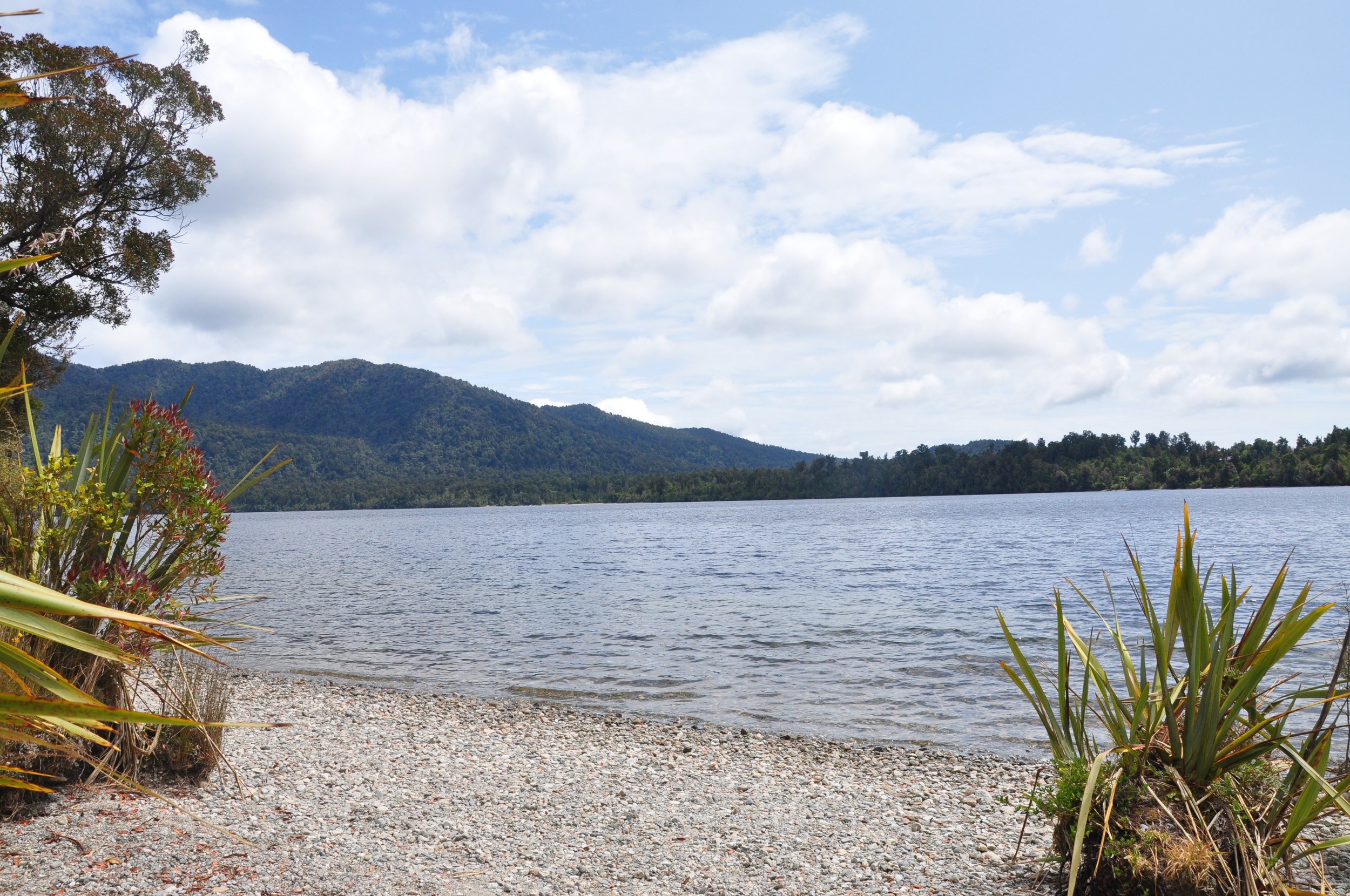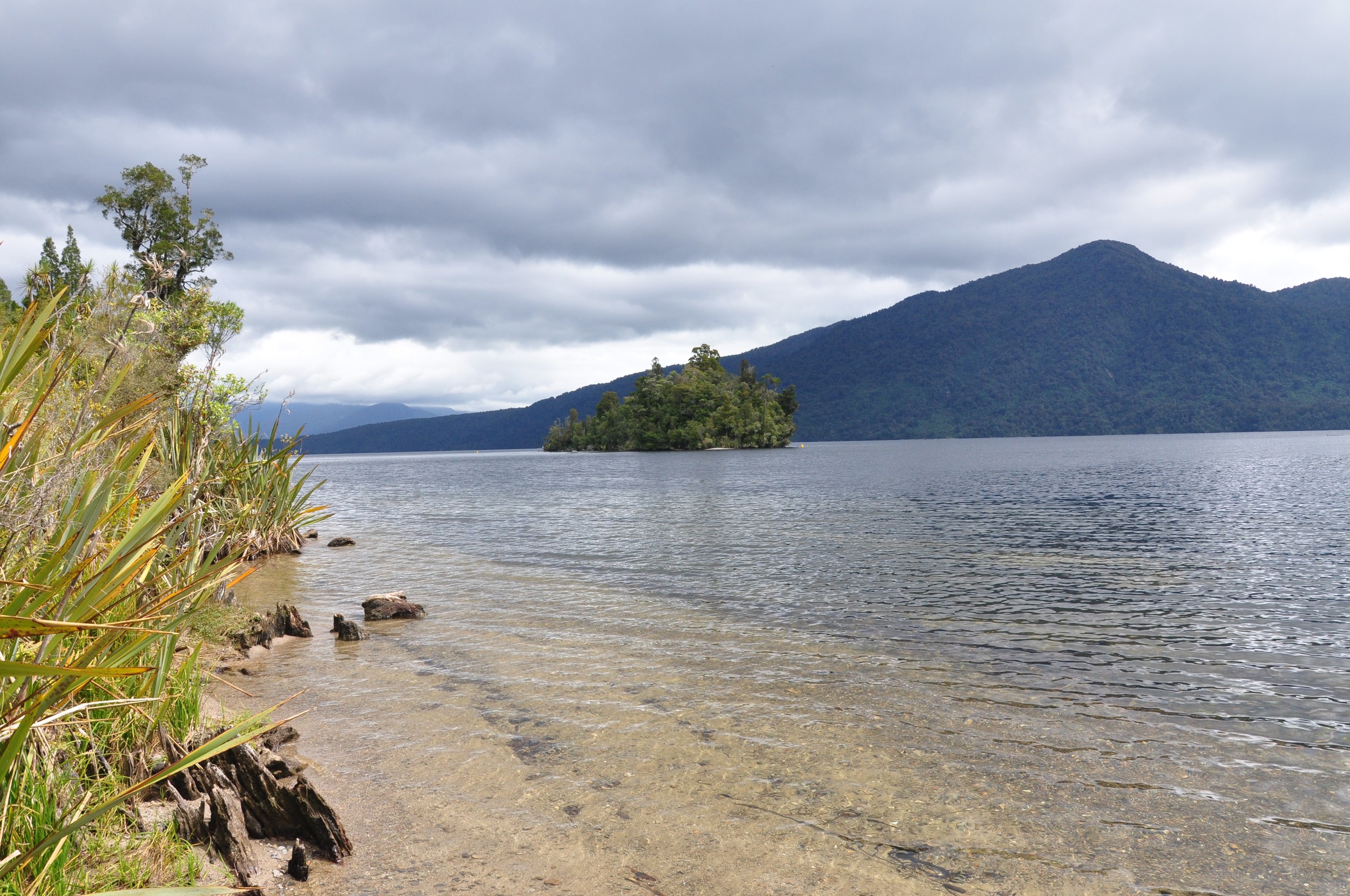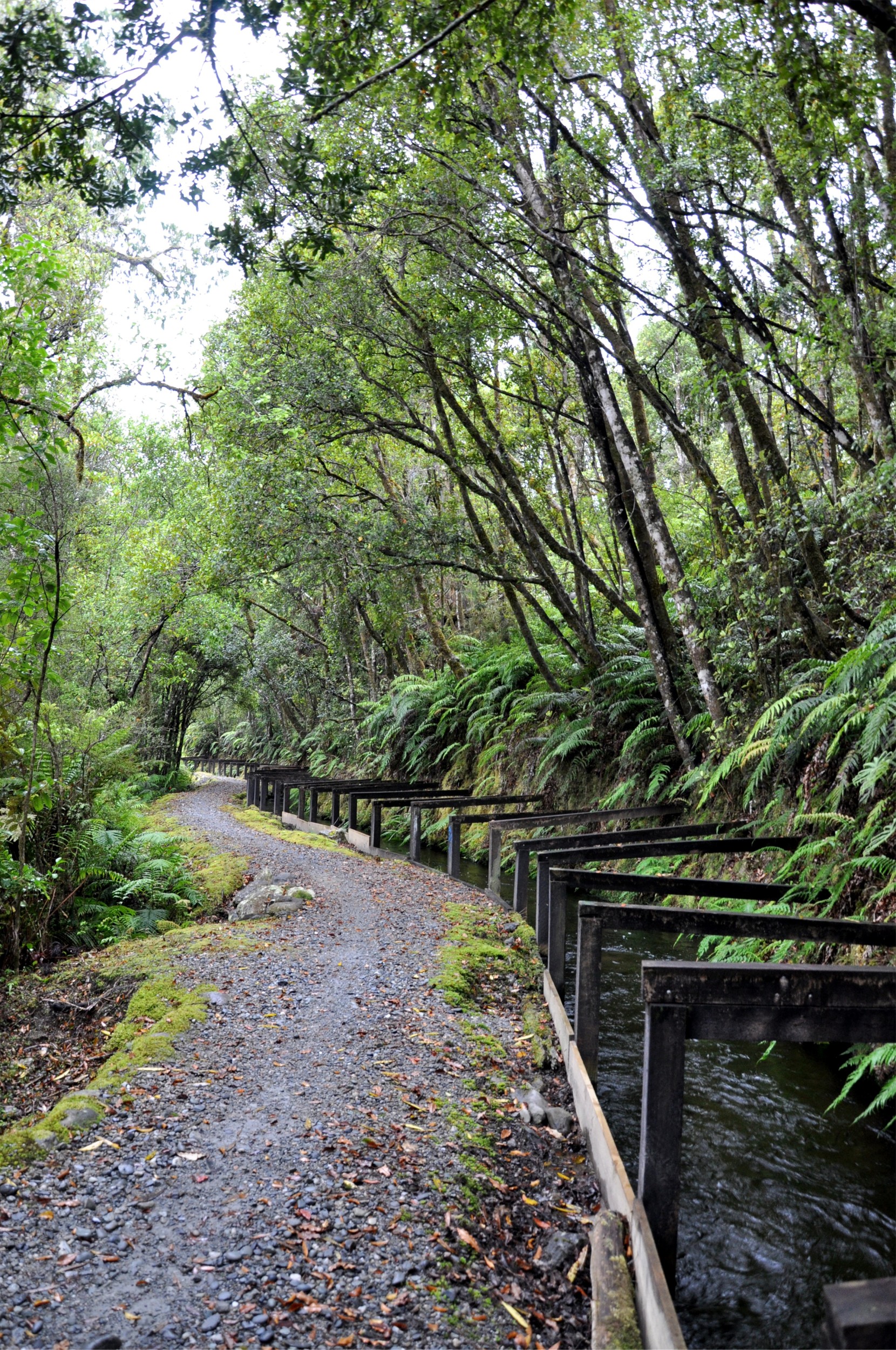After exploring the Arahura River valley, we returned to Lake Kaniere and took one of the many short tracks through the native bush to the lake shore. The lake itself is over eight kilometers long and two kilometers wide and as deep as 195 metres in places.

We walked down to Canoe Cove through stands of native Rimu and Kahikatea (White Pine) and arrived at a small beach at one end of the lake. With the sun breaking through the clouds, we ventured into the shallows for a quick paddle. At the edge of the lake the water was crystal clear and quite pleasant, but we could clearly see the drop-off where the tannin-stained water looked much colder.

Our next stop was the Lake Kaniere Water Race, we followed a short section of the water race that in total runs over nine kilometers to feed a small hydro electric power station. The power station was built in 1907 and continues to provide an average of 3.5 gigawatt hours of power annually to the national grid.

The first water workings in this area date back to 1875, when a series of water races were construcuted to support the gold claims in the area. Despite the huge investment at the time, the goldfields continued to decline. Subsequent attempts to use the race to support other mining operations in the area were equally unsuccessful.

Unlike so many of the water races we have see when exploring the old mining areas, this one was still such good condition as it provides power to the national grid. We could see original wood flume sections made of heart rimu that had been patched with modern treated pine. The track alongside the water race was part of a new long distance cycle way and made for an easy stroll. However, with the West Coast rain returning, we decided to turn back and head back to the cabin to dry out.
